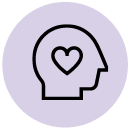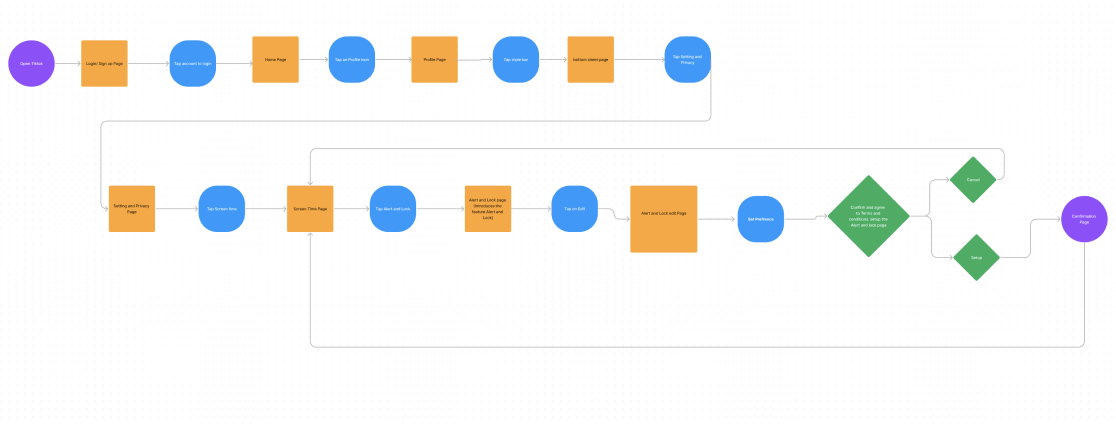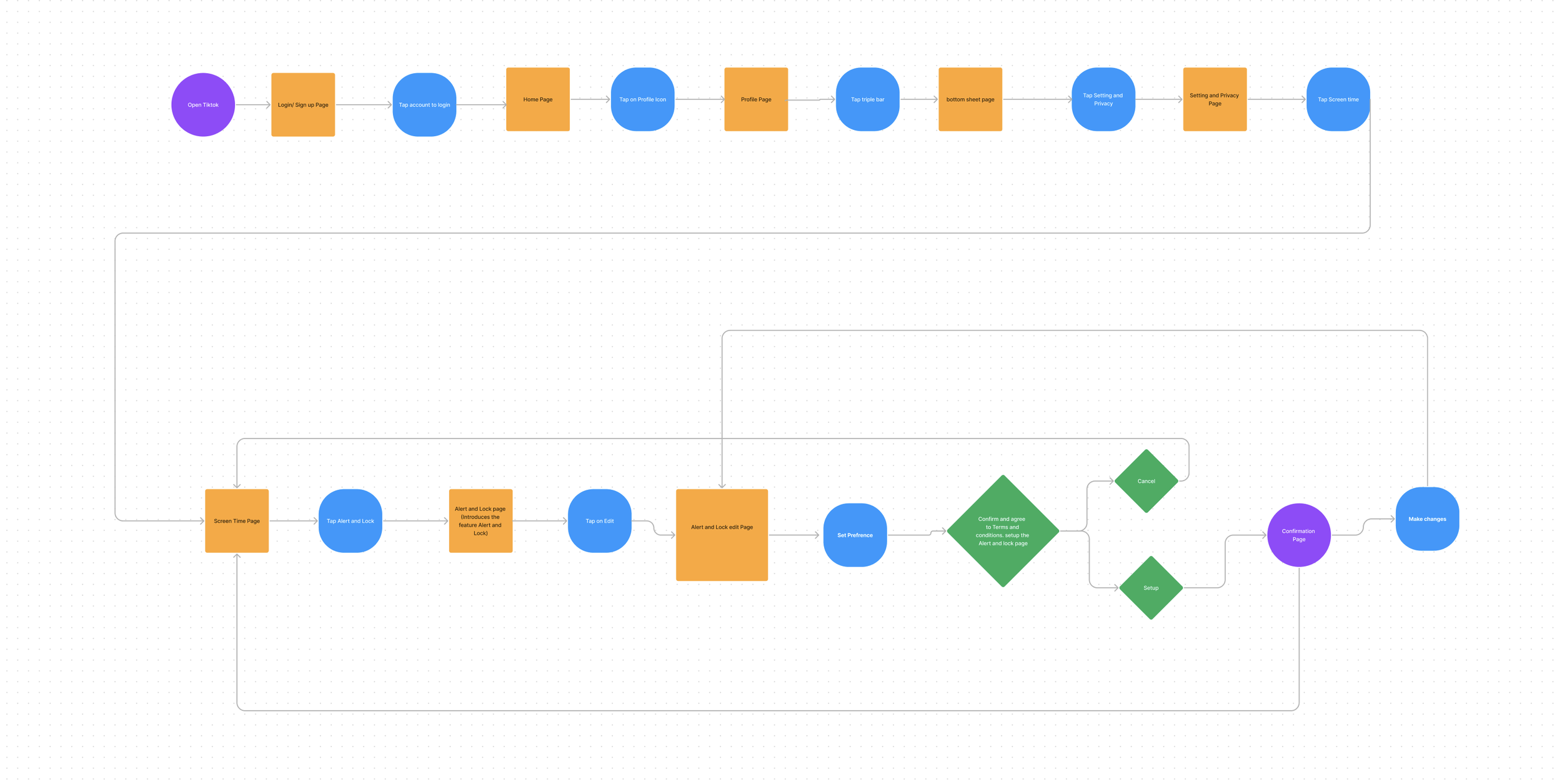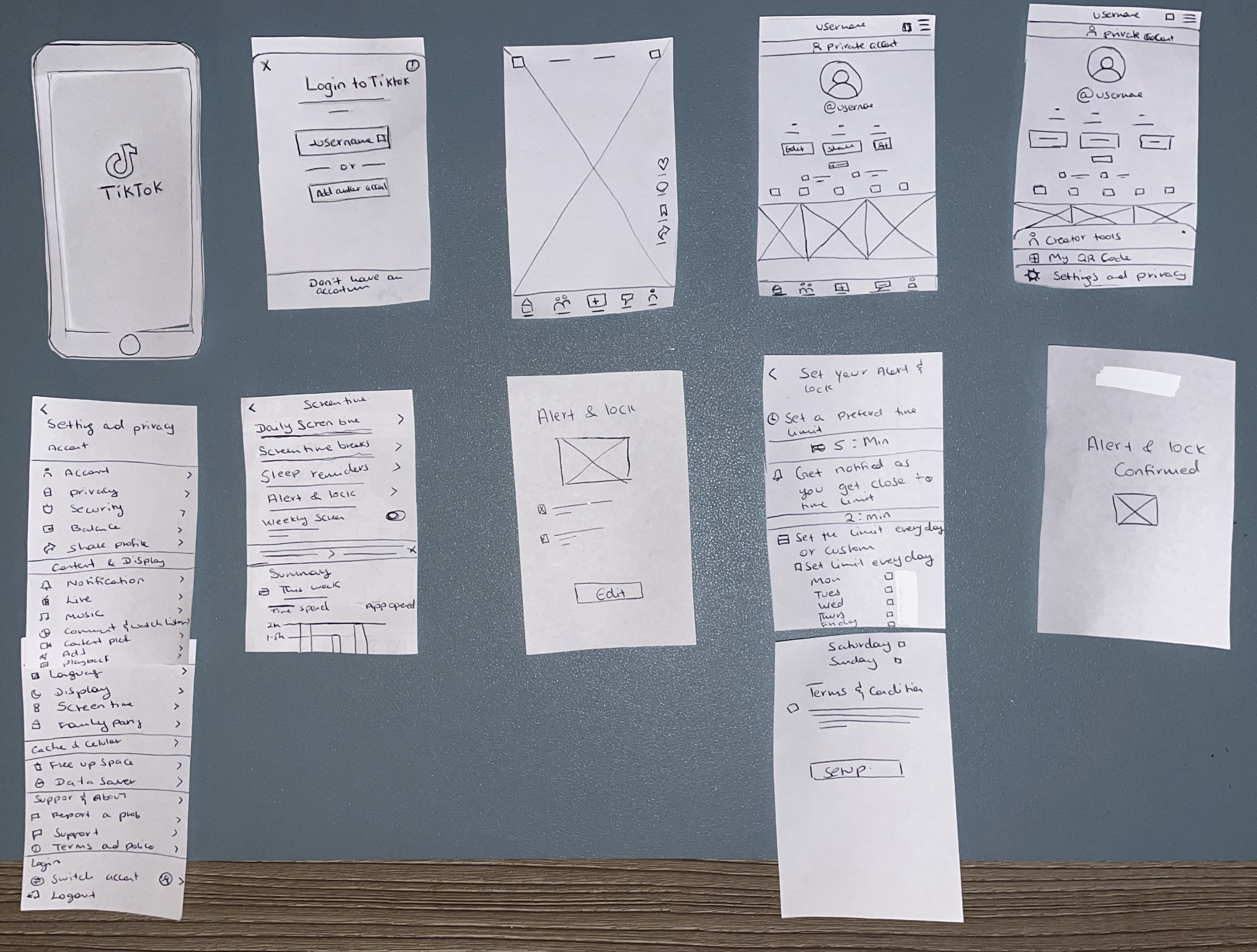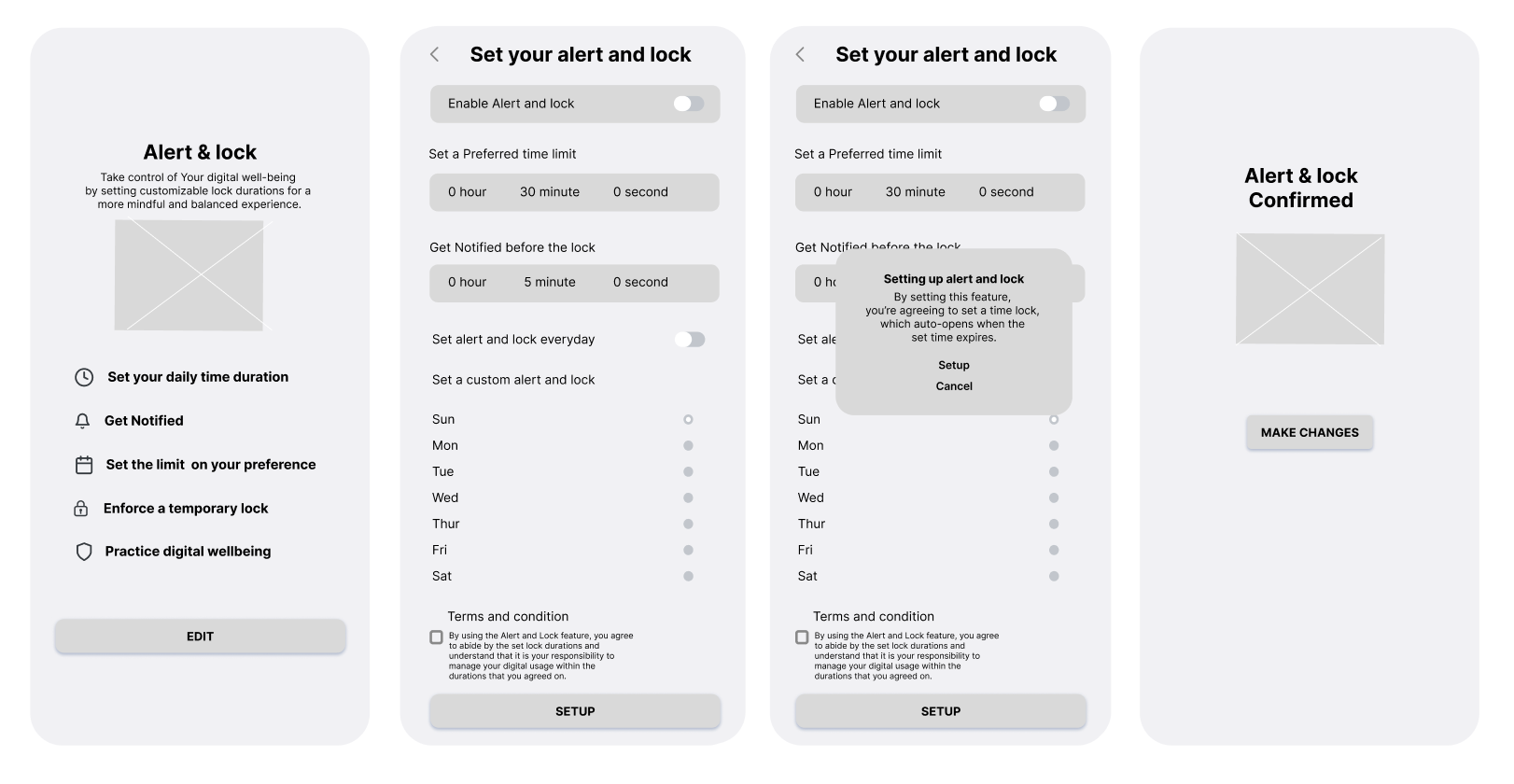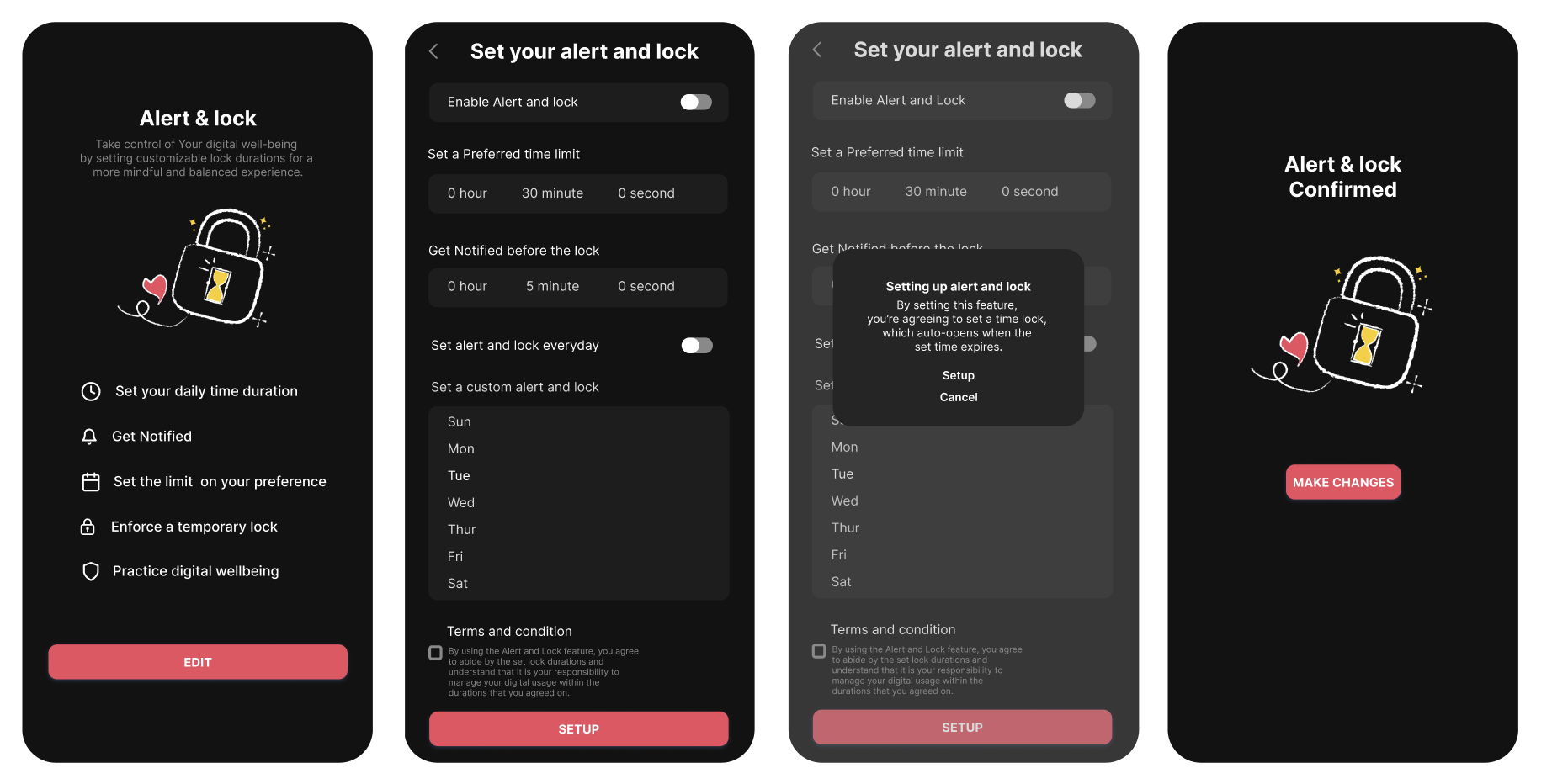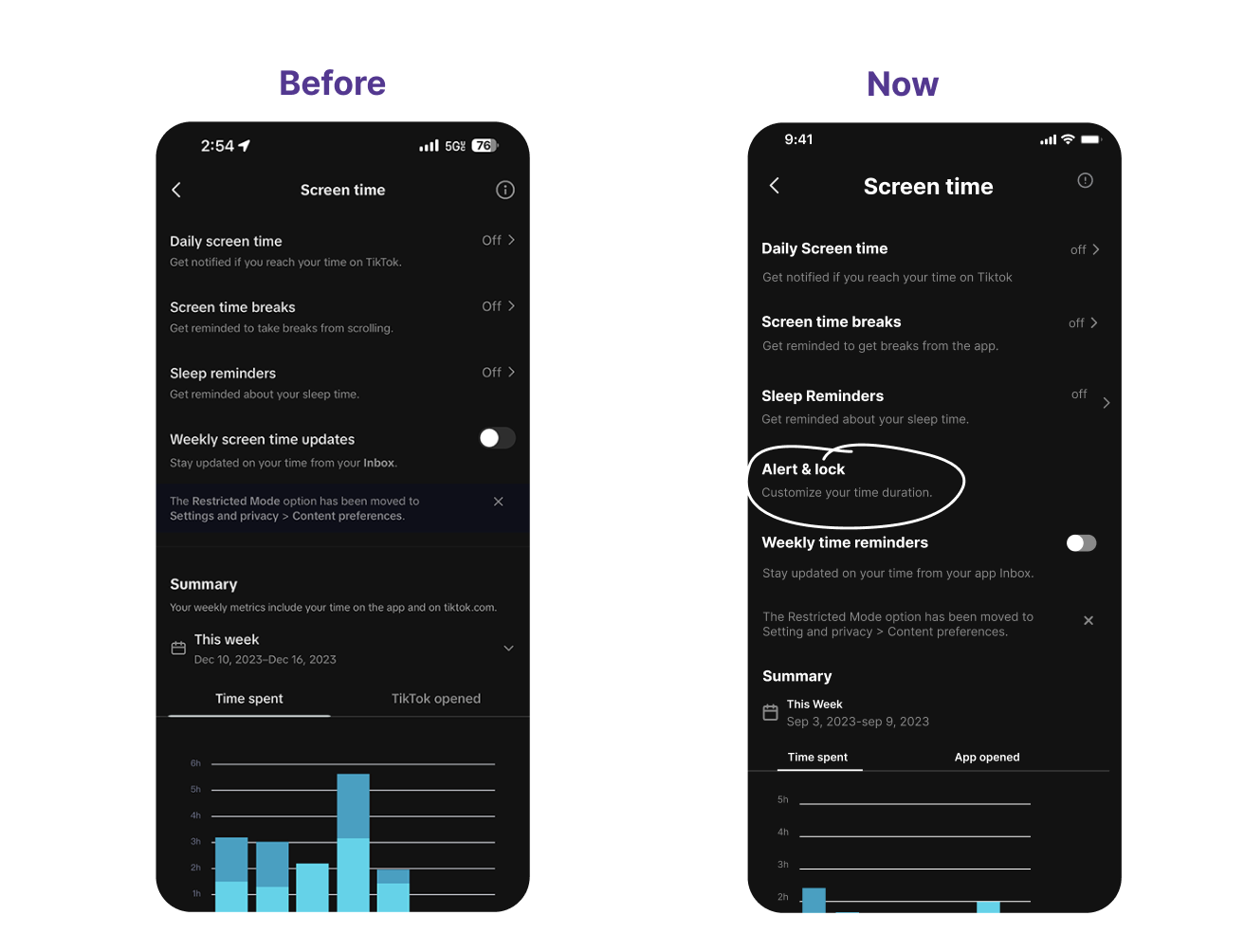TikTok
Promotes self-discipline, time awareness, and enhanced productivity.
My Team
A solo project for Careerist boot camp
My Role
UX/UI Design Intern
Tools
Figma, Figjam, Illustrator
Duration
Three Months
Background
What is TikTok and why did I choose it for my project?
TikTok is a popular app for making and sharing short videos. People participate in challenges and follow trends on it. The app suggests videos based on your interests. I wanted to work on this project because I enjoy using TikTok for fun. However, I have a problem because I spend too much time browsing it daily. This habit prevents me from doing other things. Even though TikTok is enjoyable, I need to find a balance so that it doesn't take up too much of my time and affect my work
Suspected Problem
I suspect that TikTok users struggle to close the app when they need to move on to doing other important things
My Design Approach
By including my design approach for this project, I wanted to show that I am coming from a place of empathy to understand and prioritize users.
Digital Well-being
TikTok is fun and exciting, but endless scrolling through can be overwhelming. So, It's essential to prioritize users’ mental health.
Empowering Time Management
While the algorithm provides users with interesting content, users need to close the app, manage their time effectively, and address other important tasks that need to be done.
Mindfulness
It's important to encourage users to be in the moment, focus on their loved ones, and be aware of what's happening around them rather than always being online.
User-Centric
Prioritizing user’s needs and preferences enhances user satisfaction and positive experiences and brings higher user engagement and success to the app.
Discovery
User Interviews
Now that I have a suspected problem, I conducted a user interview with four TikTok users in person to validate my suspicion and gain valuable insights into the TikTok user experience.
Research Goals
When doing my research, I aimed to discover
How long do they spend using TikTok?
How does the app prevent them from performing other essential tasks?
Whether it affected their well-being or their productivity.
How they are currently dealing with the problem
Affinity Mapping
I gathered all the information I received by combining similar ones to see patterns and connections.
Key Insights from user interviews
Participants contemplate deleting TikTok because they can't control themselves.
Participants lack a sense of control over the app, making them feel pessimistic about TikTok.
Participants would have a more positive experience using TikTok if the app showed care for their well-being.
Persona
Based on my research, I synthesized the goals, behaviors, and pain points. This makes it easier for me to design with one person in mind and have a straightforward story of the user, which helps me understand better.
Marsha Mellow
Age: 28
Occupation: Associate Director
Status: Single
" I like using TikTok, but I use it more than planned, so I want to delete it."
About
Marsha is a full-time worker; she spends 1-2 hours on TikTok during the week and more on weekends because she gets carried away. While she appreciates the personalized, informative content on her "for you page" (FYP), it's distracting her from performing other important tasks, she's not engaging with people around her, and it's raising concerns about her mental health. She's tried setting reminders to log off but thinks about deleting the app when that doesn't work.
Habit
She uses the app every day.
She gets carried away when scrolling.
Set up reminders.
Pian points
She feels resentful of herself
She Feels less productive
Not being present in her surroundings
She doesn’t know what else could be done when the reminders she set up are not helping.
Goals
To maintain a healthy screen time while using TikTok and still enjoy the app I love.
Empathy mapping
Doing an empathy map helped me understand the critical areas my persona thinks about, making me more empathetic toward them.
Marsha says
I need to cut down on TikTok; it's taking up too much of my time.
I keep setting reminders, but I ignore them and keep scrolling.
Maybe I should delete the app to focus on more important things.
Marsha does
Use TikTok every day for a long time.
He gets carried away when scrolling through the app.
Sets up reminders to limit screen time.
Marsha thinks
She's less productive when she spends too much time on TikTok.
She is not engaging with the people around me, and it's affecting my mental health.
Deleting the app might be the only solution to break this cycle.
Marsha feels
She has used TikTok every day for a long time.
She gets carried away when scrolling through the app.
She sets up reminders to limit screen time.
Problem Statement
TikTok users struggle to complete tasks they care about while using the app because they lack control over their usage and overuse it. This is a problem because it affects their mental health and makes them consider deleting the app.
Ideation
After finishing my research, I devised two approaches for TikTok to implement and encourage users to take breaks and engage in other activities.
TikTok could introduce better digital well-being features, such as more prominent screen time reminders and options to customize time limits for app usage.
TikTok could introduce prominent screen time reminder notifications on TikTok, along with short yet impactful mental health tips, which may positively influence user well-being.
scenario
As Marsha scrolls through her "For You Page," a notification reminds her of her screen time limit. Intrigued, she explores the settings and discovers the option to customize her time limits for TikTok usage.
scenario
Marsha receives a notification from TikTok that reminds her about screen time and includes a short, impactful mental health tip. Surprised and appreciative of the focus on well-being, she started paying more attention to these notifications. Encouraged by this, she starts closing the app when she's scrolling too much, prioritizing her mental well-being
JTBD
Situation
When Marsha feels like she is spending too much time on TikToke.
Motivation
She wants to have a tool that helps her set limits and reminders.
Expected Outcome
So she can easily manage and control her screen time for a healthier balance.
Situation
When Marsha is carried away scrolling through TikTok for an extended period
Motivation
She wants to receive reminders of positive encouragement and wellness tips.
Expected Outcome
So she can take a break and use the recommended tips to improve her mental well-being.
User Flow
I devised different user flows to find out and understand the needed steps. This helped me ensure the functionality worked well before designing how it looked
1
User flow for alert and lock
2
User flow for alert and lock
Solution
I came up with a feature for users to set their time limit on the app, get notifications, and have a strict lock to help with their productivity and prioritize their mental health.
The solution embodies the following values:
Time Management: Users can set time limits to manage their app usage effectively.
Communication: Users get gentle reminders before being locked out.
Productivity and Well-being: A strict lock feature is introduced to help users maintain focus, boost productivity, and prioritize mental health.
User-Centric Design: The strict lock feature is carefully designed, providing the option to return and adjust. This encourages self-control decision-making and enhances a positive user experience.
Sketches
I did my low-fidelity sketches using a paper prototype to test and improve it quickly. With simple materials like paper and pen, I tried different designs and got feedback from users. This helped me engage with users early, focus on core functionality, and refine.
Mid-Fidelity
I created a mid-fidelity prototype as the backbone of my designs because it provided a solid foundation for each screen's layout and visual hierarchy.
High-Fidelity
I created a high-fidelity prototype, a detailed and polished version of the final product in terms of design and functionality. Users can control their time and digital well-being by
Being introduced to the feature
Setting up how long they want to use the app
Getting notified when they're close to their limit
Choosing their preferred days
Agree to terms and conditions
Option to go back and make last-minute changes before it’s activated.
My design includes TikTok settings with the Alert and Lock feature.
Existing TikTok settings without the Alert and Lock feature
Alert & lock feature is now included in the existing screen time lists.
Mobile Interactive Version
Desktop Version
Desktop Interactive version
Learnings
Understand User
When designing features, it's essential to empathize users through research. Understand how their challenges. This helps create features that genuinely meet their needs.
User Centric
People have different ways of managing their time. Some like strict locks, while others prefer reminders. They are making the feature successful by giving users various options to pick what works for them best.


